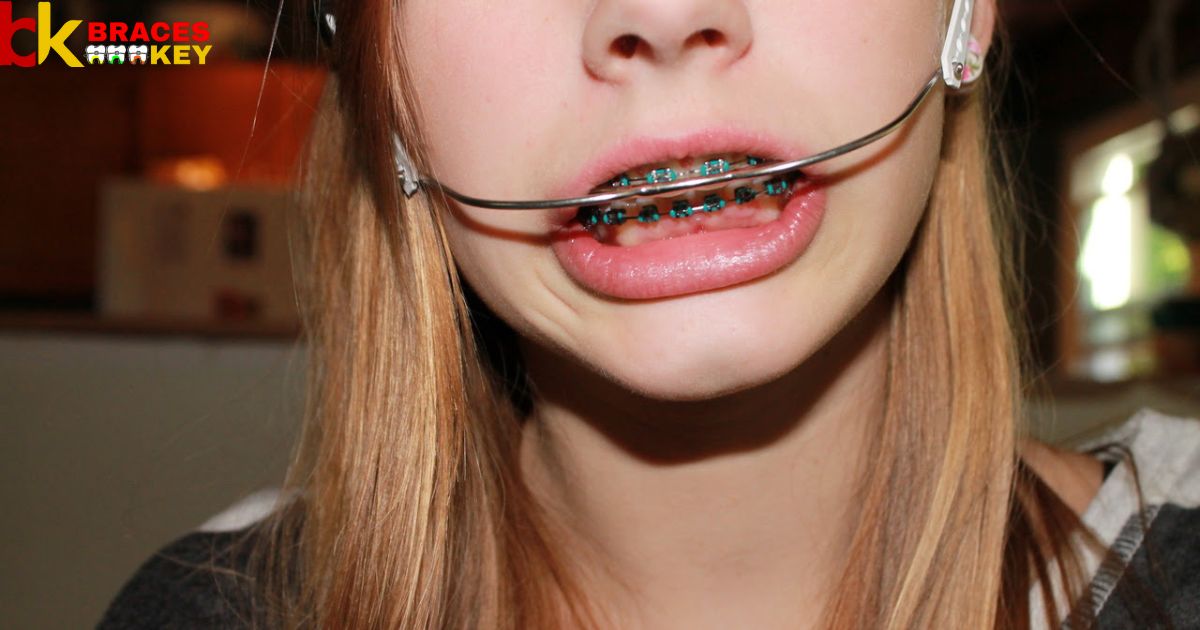Headgear is dental apparatus used to realign crooked or misaligned teeth. Connected to braces via a metal faceplate and elastic bands, headgear applies slow pressure beyond the braces alone. While unwieldy at night and awkward socially, headgear enhances braces’ effectiveness for significant misalignment corrections.
Braces use small brackets and wires to adjust tooth placement over time. An orthodontist attaches them, and they may feel irritated initially as teeth react. But patients grow accustomed to them, and braces motivate smiles towards their perfect form.
Together these tools can remedy major alignment issues, as their steady forces convince teeth to move soundly into new spaces. Progress seems gradual, but documented movement shows reliable transition occurring under the guidance of skilled professionals dedicated to beautiful results.
Key Takeaways
- Headgear works in tandem with braces to apply supplementary corrective forces from outside the oral cavity, helping with more severe misalignments.
- It connects to a metal plate affixed to the braces via elastic bands, utilizing forces of leverage and distance to guide teeth movements. Don’t miss to read out this topic Different Types Of Wires.
- Braces apply directional pressure internally using brackets, wires, and auxiliary attachments fitted to individual teeth for gradual repositioning.
- Together these tools can remedy even very pronounced malocclusions through their combined constant bodily pushing and pulling influences over an extended treatment period.
- While headgear may seem socially awkward at times due to its visible external hardware, orthodontists rely on it to enhance braces’ effects for significant orthodontic transformations beyond what braces alone can achieve.
Overview Of Headgear And Braces

Braces use brackets and wires to maneuver teeth into alignment from within the mouth. For complex cases, headgear augments this internal work with extra leverage from outside forces. Connected to braces via a palatal plate, elastic bands transmit headgear’s corrective pressure to complementary guide teeth into their ideal positions.
Together this dynamic duo takes on even severe misalignments, with braces concentrating efforts internally and headgear providing supplemental redirection from outside. Through their combined constant influence, teeth are smoothly guided where needed for beautiful, balanced results.
Step By Step Guide To Headgear And Braces
- A palatal plate is bonded to the roof of the mouth, affixed firmly to existing braces. This anchorage distributes headgear’s supplemental forces.
- Elastic bands are clasped between headgear and the palatal plate, introducing corrective leverage from outside oral cavities. As teeth shift internally under bracket pressures, headgear guides them from abroad.
- Through months of nightly wear harnessing cooperation between internal dental forces and external traction, previously unreachable dental equilibriums are attained. Teeth instinctively gravitate to designations pre arranged by ingenious allies culminating smiles
What Are The Basic Parts Of Headgear?
Whether it’s a helmet, hat or hood, headgears come with parts to serve their purpose. The protective shell covers the top and sides of the head from harm’s way. Snug straps hold it firmly in place so it doesn’t fly away.
Padding on the inside adds comfort against the wearer’s scalp. Vents allow air to flow to avoid a sweaty ride. Decorations make a fashion statement to top it all off in style. Adjustability is key so straps then loop under the chin or around the back of the skull to guarantee a proper, comfortable fit.
Cervical Pull
The cervical pull is a simple yet effective exercise for the neck. Sitting upright, the head is allowed to slightly fall forward before being gently drawn back to the starting position. This movement is then repeated with small, controlled motions to strengthen supporting muscles. Performing cervical pulls provides relief from stiffness while improving flexibility and range of motion in the delicate cervical spine.
High Pull
From a hinged starting position, the lifter dynamically explodes upward with their entire body. The movement begins with the forceful extension of the legs and hips, launching the weighted barbell skyward. As the bar soars, the arms vigorously pull and shrug to draw the weight even higher overhead. The full-body coordinated effort of the high pull exercises power and builds strength throughout the body.
Why Do You Need Headgear?
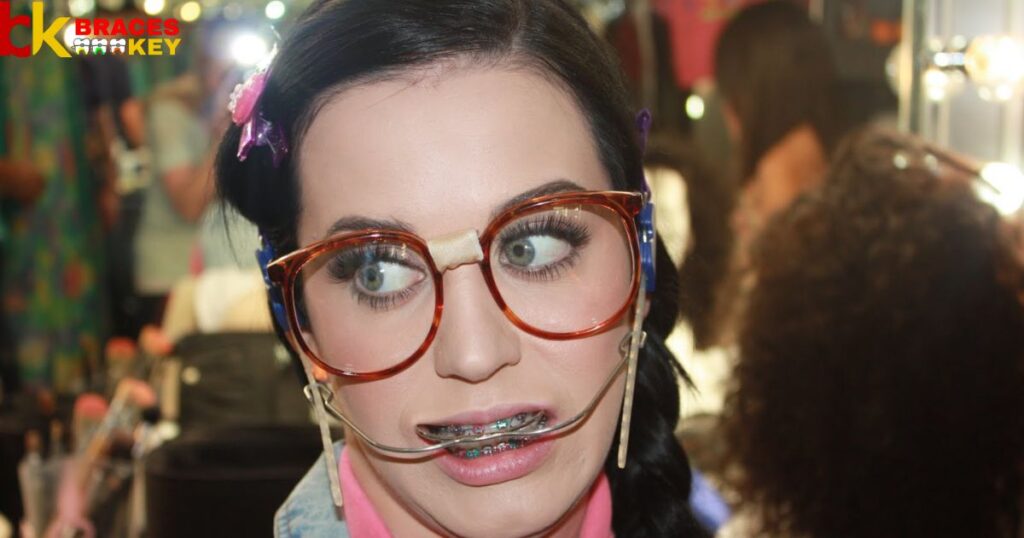
Whether indulging in recreational sports or hazardous work, headgear provides an invaluable layer of protection. It shields the skull from impacts during falls or collisions, preventing injury from blows that could otherwise cause serious harm.
With delicate bones and neural pathways contained within, the head is precisely what safety gear aims to safeguard. Headgear helps ensure we can stay in the game. Your health is simply too precious not to safeguard with the wise investment of proper headgear.
What Is Headgear And How Does It Work?
Headgear encompasses any wearable equipment that shields the head from threats. Whether hardhats for construction or helmets for sports, headgear utilizes layers to defend vulnerabilities. An external durable shell withstands direct impacts while internal shock-absorbing padding buffers secondary collisions.
Adjustable retention systems keep the headgear locked securely in place during motion. Strategic vents and moisture-wicking fabrics also enhance user comfort long-term. Through considered designs, headgear empowers safety and performance for critical activities.
Is Headgear Still Used In Orthodontics?
While clear aligners and less conspicuous treatments gain popularity, headgear retains an important role in orthodontics. For patients requiring more extensive jaw or bite corrections, extraoral forces applied through headgear can help shift growth in beneficial ways.
Though dated perceptions linger, modern headgear designs minimize bulkiness and incorporate colors to boost confidence. Combined with other appliances, nocturnal wear of low-profile headgear frequently proves instrumental in achieving durable orthodontic results for serious malocclusions.
How Long Do You Wear Headgear?
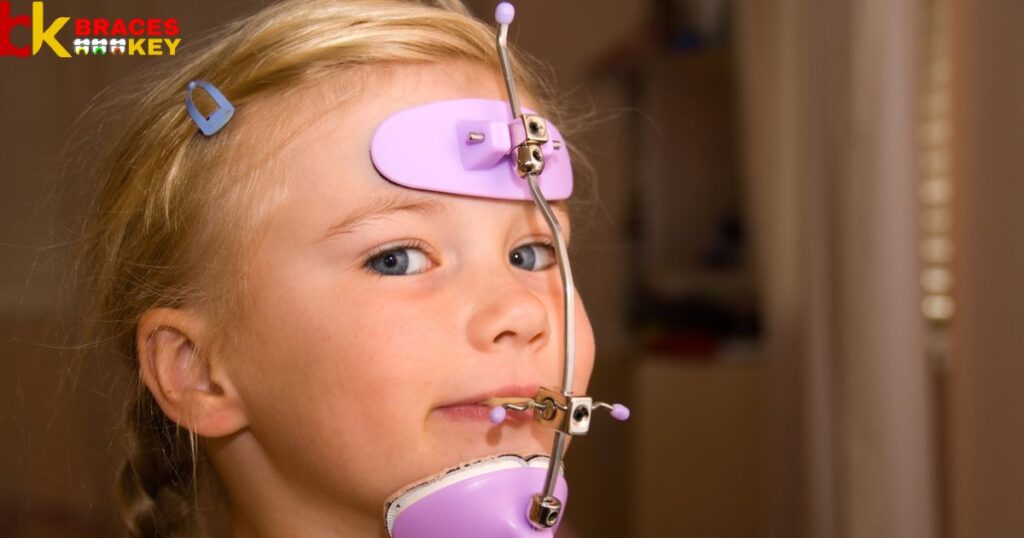
The duration of headgear wear depends entirely on the individual’s orthodontic treatment plan and response to therapy. As a general guideline, patients are instructed to sport their headgear around 10 to 14 hours per day during the beginning phases of alignment.
Progress is then reassessed during periodic checkups, with wear time often tapering off over 6 months to 2 years as desired shifts occur. Close cooperation between orthodontist and patient helps ensure proper wear adherence while continuously re-evaluating treatment length and headgear dependence. Communication leads to great outcomes.
Is Headgear Better Than Braces?
While traditional braces rely solely on small incremental movements over time, headgear augments their effects with controlled bursts of rapid change. Worn during adolescent growth spurts, headgear harnesses ongoing bone development to more rapidly expand arches and position jaws.
For patients requiring extensive correction, headgear proves a valuable ally to braces by helping reduce scheduled treatment length. Both approaches have their place, though many orthodontists find select cases benefit most from the powerful one-two punch of headgear combining with braces.
Do All Overbites Need Headgear?
Not every overbite warrants treatment with headgear. Minor discrepancies involving mostly cosmetic concerns may be addressed solely through braces. Severe overjets placing undue strain on surrounding tissues often respond best to headgear’s ability to redirect jaw growth.
By determining the overbite’s severity and a patient’s mixed versus permanent dentition stage, orthodontists can skillfully judge whether headgear offers the best chance to most efficiently correct underlying skeletal imbalances. Only moderate to extensive overbites regularly require its customized correction.
What Are The Negative Effects Of Headgear?
While headgear effectively moves teeth, its extended wear introduces disadvantages. Soft tissues may endure pain, irritation or sores from abrasion against the rigid apparatus. Self-consciousness commonly arises due to its conspicuousness. Unaccustomed pulling sensations transmit discomfort, occasionally worsening headaches or jaw stiffness.
Non-compliance becomes a risk if patients reject the hampered lifestyle. With the orthodontist’s adjustments and reassurances that issues usually subside, these temporary downsides often prove worthwhile against the gains of successful orthodontic therapy aided by headgear.
Do Adults Need Headgear For Braces?
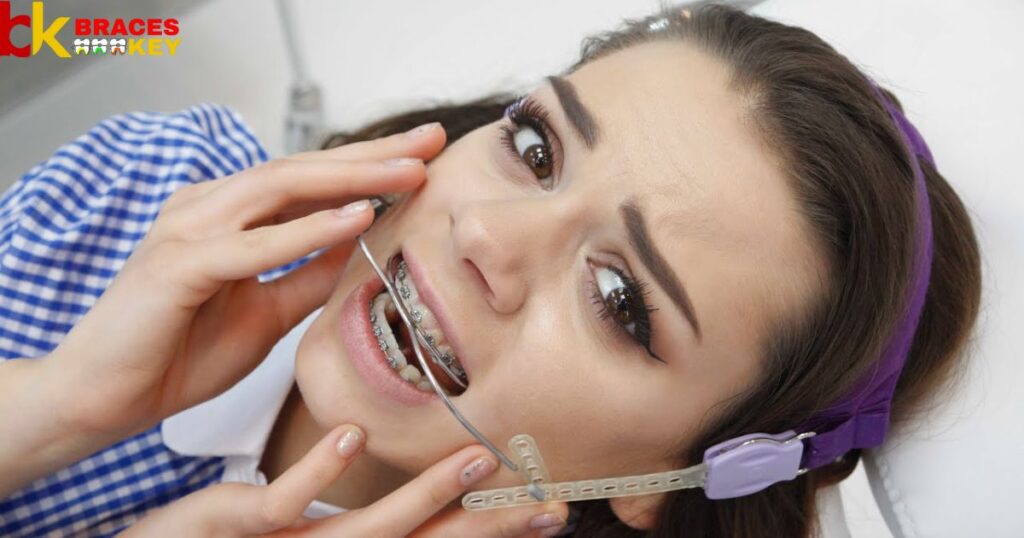
More adults now embark on orthodontic treatments than ever before. Yet challenges differ from growing children – bone structures cease developing, requiring alternate correction approaches. Headgear finds renewed usefulness for adult patients, while it can’t reposition jaw growth, its controlled forces mobilize stubborn top teeth more rapidly compared to braces alone.
Paired with compliance, headgear allows resolving complex malocclusions faster to minimize lengthy treatments. While aesthetics matter most to adults, functional improvement often motivates headgear’s willingness to endure.
How Do You Sleep With Headgear Braces?
Adjusting to headgear’s unwieldy embrace takes adapting comfort rituals. Wearing it correctly aligns the mandibular pad below the chin while avoiding tightening overly snug. Then soft sleeves fit over protruding ends, cushioning contact without hampering leverage.
Side sleeping feels most forgiving as only one elastic meets the pillow instead of both. Melatonin or relaxation techniques quell potential tooth pain or jaw ache speedier. Keeping floss and toothpaste nearby eases morning routine amid tight equipment. With tweaks, headgear sleep remains restored.
First, What Is Orthodontic Headgear?
Orthodontic headgear is extraoral apparatus utilized to carefully influence facial growth modulation. Attached to selected braces via hooks and bands, flexible tubes born from the headgear frame conduct controlled biomechanical forces to strategically positioned teeth.
These digitally calibrated orthodontic forces facilitate appropriate remodeling of craniofacial structures over time. Worn as prescribed, often nocturnally, headgear efficiently regulates skeletal development toward establishing functional occlusion and balanced facial esthetics.
Is Orthodontic Headgear Painful?
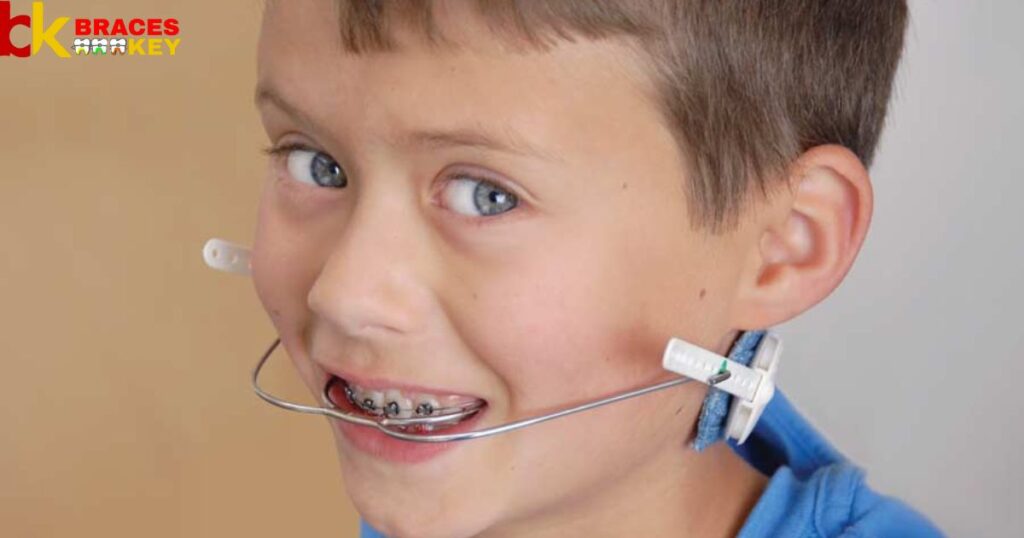
While initial adjustment periods introduce mild transient discomfort, most patients report orthodontic headgear causing minimal lasting pain. Sparing nerve endings, elastic bands apply low-grade forces preferable to mouthware alone. As dentoalveolar tissues become biologically accustomed to directed stresses, any pressure resolves within days of proper wear.
Pre-treatment orthodontic wax preempts potential wire irritation. Regular checkups allow clinicians to calibrate tension precisely for patient physiology. With short-term adaptation, the long-term benefits of accurate guidance ensure the ends outweigh minimal means.
Can Headgear Fix Overbite?
An overbite stems from complex jaw relationships requiring multi-dimensional correction. While braces realign crooked teeth, orthodontic headgear uniquely addresses underlining skeletal discrepancies producing overbites. By controlling jawbone molding through slow, steady forces applied during growth years, headgear helps reposition a retrusive mandible or promotional maxilla.
With diligent wear consolidating other orthodontic maneuvers, many studies attest headgear effectively reduces overbites even of severe expression. For adolescents, headgear offers promising potential to achieve attractive, balanced facial development and long-term stable results.
Does Headgear Change Face Shape?
Applied judiciously throughout formative years, orthodontic headgear can subtly yet meaningfully influence developing facial aesthetics. By encouraging symmetrical growth of cranial sutures, it cultivates balanced proportions of the jawline and chin to counteract structural asymmetries.
Wearing headgear optimizes occlusal relationships to avoid straining facial muscles over time into non-ideal contours. Periodic evaluations track progress, catching any need for tension refinements to guide facial bones toward their genetically intended harmony. With diligence, headgear treats the underlying causes of displeasing facial traits.
Orthodontic Headgear

Worn externally, orthodontic headgear harnesses the irresistible momentum of facial development within the receptive years of youth. Elastically fastened points of leverage affix to preliminary orthodontic appliances already incrementally repositioning the teeth.
Subtle extension of these forces in a carefully calculated vector redirects the bony architecture constructing the lower third of the face. Throughout maturation, orthodontic headgear shepherds jawbones along optimized growth trajectories, honing facial symmetry, proportion and balance vital to smile health, confidence and lasting esthetic gratification.
Types Of Headgear
Several headgear styles exist to address diverse malocclusion severities. Facebow designs drape elastic strands from metal arcs welcoming broader contact, but bulkier profiles inconvenience wearers. Simple twin-tube variations prove preferable, connecting dual stainless-steel tubes between braces and a flexible transpalatal or mandibular arch.
Less conspicuous options like cervicohyoid or chin cups attached below the chin pad also correct lesser discrepancies. Choosing between fixed or removable appliances, orthodontists match beneficial biomechanics with patient comfort and cooperation levels.
Headgear Fashion
Though chiefly clinical, headgear receives enhanced acceptance by embracing personal flair. Colorful elastics, gemstone encrusted faces, even whimsical prints boost self-image when following orthodontic directives. Functional need not preclude expression, as innovations inspire compliance through screened superheroes, favorite sports logos, or distraction from determined corrective missions.
Cervical Headgear
Cervical headgear ascends from neck fittings, bypassing teeth entirely to direct forces more selectively. Contoured rings nestle below the mandible, while elastic chains rein back maxillary growth exclusively. For targeting specific orthodontic discrepancies with precision, cervical options prove a tolerable, versatile solution.
Eccentric Headgear
An eccentric vector pulls the growth centers outward, flaring the arches to their balanced dimensions. Springs fitted through hooks on teeth manipulate the basal bone, gradual expansion guided by monitored tensions. Subtle force proves mightier than raw pressure in sculpting harmony from within the inherently perfectible design of youthful inhabitants learning to smile.
Making Headgear Work Depends On You

Headgear alone cannot remedy underlying malocclusions – it relies on your commitment. Faithful wear secures the rewards of your invested time, ensuring tension directs development of a beautiful, balanced face.
Consistency surprises even skeptics with results beyond expectations. Your diligence inspires the orthodontist’s expertise, and frustration gives way to gratification seeing daily progress photographs. You hold the key to unlocking your greatest smile; with perseverance, headgear delivers.
Maintain Your Headgear And Your Oral Health
Headgear hitches a ride on your smile train, so keep it shipshape for the journey. Clean elastic cords and coils weekly with brush and paste to fend off biofilm buildup. Check for bites or cracks that could impede proper forces. Inform orthodontists of repairs needed to precision-calibrate mechanics.
Your pearly whites and supporting structure depend on headgear’s smooth operation. Together, diligent homecare and routine checkups ensure oral health triumphs on the road to perfect occlusion.
Are There Risks From Wearing Headgear?
While headgear heralds predictable benefits, rare risks exist. Impaction cuts may occur if elastics snap, but can be avoided through inspections. Some notice pressure headaches, temporary jaw soreness easing within days.
Retainers wear post-treatment shields against relapse, just as compliance prevents longer-term problems. With orthodontists guiding adjustments and patients following care recommendations, headgear journeys stay safely on track. Proper fit, monitored wear, and open communication dwarfs chances of adversity.
What You Can And Can’t Do While Wearing Headgear?

Headgear hinders some social activities yet need not be isolated. Low-impact sports, remote learning and board games proceed as usual with reminders. Certain foods pose no-gos – sharp, sticky or excessively hot items could compromise wires.
Brushing after meals and a soft diet works, as do short breaks allowing respite. Communication keeps spirits up; technology connects you while obligations align jaws for rewarding futures. With understanding, headgear years open doors instead of boxing youth within braces.
What To Expect When Wearing Headgear?
While advancement seems gradual in the mirror, subtle forces recontour the underlying architecture. Early weeks may bring awkward awareness gradually replaced by habit. Elastic tension yields to chewing pressures as intended effects emerge.
Short term adjustments accustomed the mandible and maxilla to their repositioning. Patience through the program unlocks perfect function and balanced facial symmetry as a reward for diligence. Progress astounds upon reflection on the straightened smile of tomorrow brought through today’s invisible movements.
What’s The Outlook For People Who Are Prescribed Headgear?
Headgear promises a straightened, aligned grin and confidence bearing it. Through the discipline of consistent wear, expansion occurs gradually yielding space for teeth to find harmony.
Cooperation accelerates treatment’s end, unveiling brighter views of one’s future. While elastic cords constrain temporarily, long term orthodontia using innovative techniques like headgear build beauty from within. With commitment to the process, sunny outlooks become reality through improved oral wellness, function and esthetic appeal.
When is Headgear Necessary?
Crowding exceeds available arch length requiring relief. Severe overbites render jaws misaligned while underbites endanger teeth. Skewed midlines must shift toward symmetry. Protrusive profiles require repositioning.
When conventional braces prove inadequate, expert evaluation determines if judiciously targeted forces from headgear can remedy these challenges. Combined with custom crafted brackets and wires, the paired forces holistically maneuver facial structures toward objectives of function and form.
The Benefits Of Orthodontic Headgear
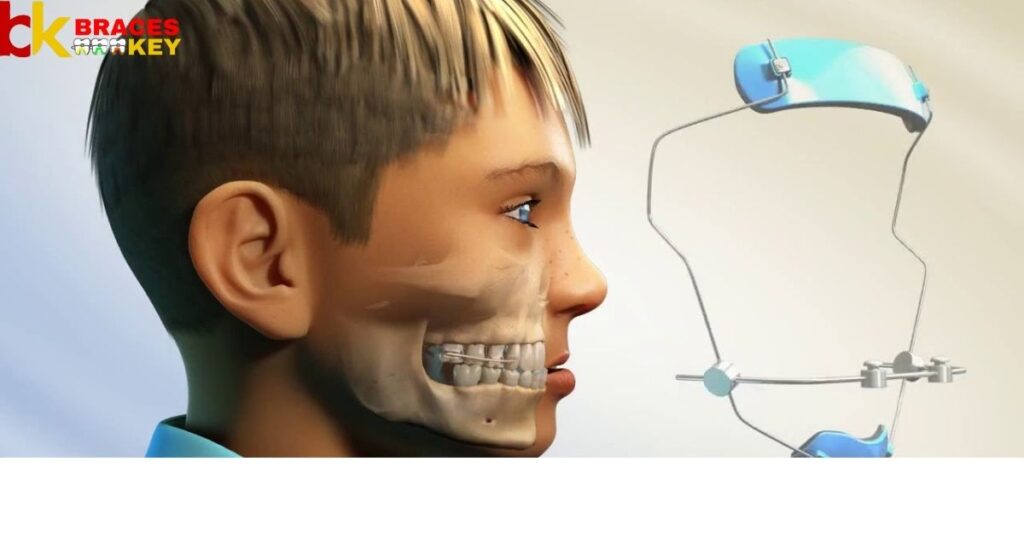
Headgears harness the malleability of youth, strategically reshaping bone beneath discreet exteriors. As teeth gradually reposition, confidence steadily builds knowing treatment remains undetectable to peers.
Gentle powers precisely overcome asymmetries to unveil radiant smiles subtly sculpted for resilience. Function and form emerge balanced, foundation for a lifetime ofCare. Guidance from certified orthodontists ensures comfort throughout, rewards of straight teeth and healthy jaws justify perseverance.
FAQ’s
Can You Wear Headgear With Braces?
Brackets partner with bands, both fixed by wires serving as anchors for elastic forces from headgear – a synchronized system guiding facial structure.
Why Don’t Orthodontists Use Headgear Anymore?
Lingual braces hide treatments while aligners boost compliance, reducing reliance on noticeable headgears to correct mild misalignments with discretion.
Is Headgear Better Than Braces?
Braces bend outward granular pressures, whereas headgear employs steady tension serving different malocclusions; combined achieve surpassing results.
Why Did People Wear Headgear With Braces?
Brackets resist tooth misalignments but headgear harnesses facial bones, maximizing orthodontic potentials through synchronous biomechanical symphonies.
Conclusion
While headgear may seem an encumbrance, its subtleties yield lifelong rewards. Guiding jaws and faces towards balanced proportions unfettered smiles and improves lives. Cooperation seals straight teeth as destiny but requires patience through discreet forces gradually finesse facial features, Headgear And Braces.
Tonight’s tensions sow tomorrow’s confidence, all guided by orthodontists who skillfully shepherd development years towards futures enriched by dignified and functional grins. Headgears and braces, in partnership under expert supervision, liberate posterities from limitations of the past.
